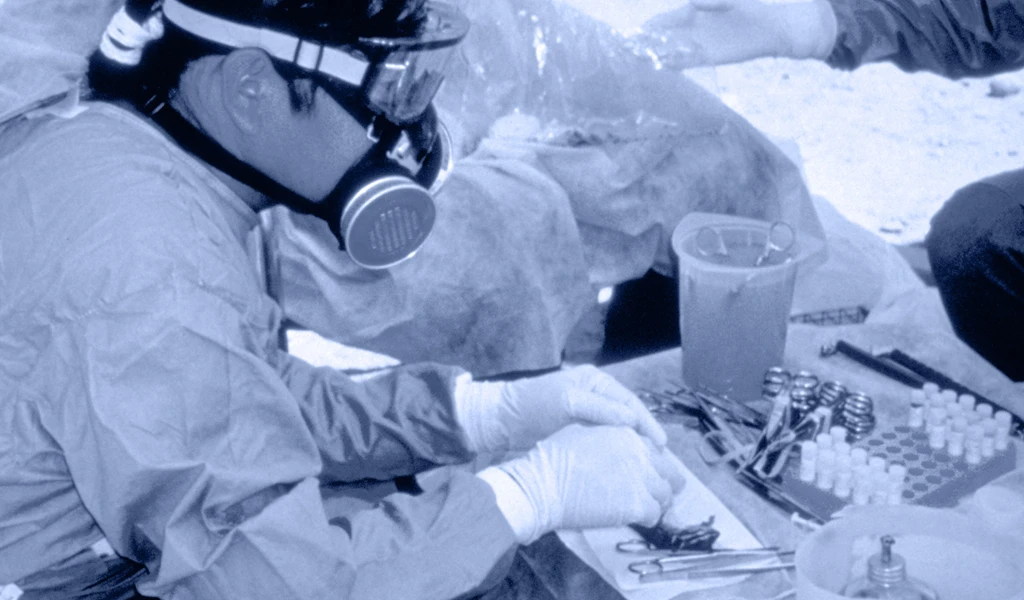DISEASE X - What it is, and what it is not

Preventing future pandemics means preparing for both known and unknown viral disease threats. That’s why scientists are focusing some of their viral defence research on a hypothetical future ‘Disease X’. With the concept of Disease X at the heart of international efforts to be better prepared, CEPI looks at what people most want to find out about this unknown pathogen.
Using ‘Answer the Public’, we analysed some of the most popular search terms related to Disease X across four countries, Ethiopia, India, the UK, and the United States, which were among the top countries searching ‘Disease X’ over the past 12 months, according to Google Trendsat the time of publishing.
Those questions, and CEPI’s answers, are below.
What is Disease X?
Disease X is the name given by scientists and the World Health Organization to an unknown pathogen that could emerge in future and cause a serious international epidemic or pandemic. In February 2018, Disease X was included in the WHO’s updated Blueprint list of diseases for which investing in research and development should be an international priority. It is also a priority for CEPI’s research and development investments.
Does Disease X really exist? And could Disease X kill you?
Disease X itself is hypothetical: it does not exist. But the concept of Disease X describes a very real and growing threat to human health – and one the world must prepare better to respond to. The most recent Disease X to emerge was the SARS-CoV-2 virus that causes COVID-19. Because we were not properly prepared to defend ourselves against it, COVID-19 swiftly spread and caused a deadly pandemic, killing millions worldwide. Safe and effective vaccines have significantly reduced COVID-19’s mortality and morbidity, saving an estimated 20 million lives in the first year of their roll-out.
Will Disease X happen? And when is Disease X coming?
No-one can predict where or when the next Disease X will emerge. What is certain, however, is that a future Disease X is out there and will, at some point, spill over from animals into people and begin to spread in a disease outbreak. Recent history shows us that outbreaks of pathogens capable of causing severe disease and death in people are becoming increasingly frequent. In the 21st century alone, there have been outbreaks of SARS-CoV-1, MERS, Zika and many other new and re-emerging viral diseases.
Research published in 2022 found that the chance of a pandemic, with a similar impact to COVID-19, is about 1 in 50 in any year. This means the lifetime probability of anyone reading this experiencing a pandemic similar to COVID-19 is about 38 percent. Unfortunately, environmental change is a major contributor to that increasing risk.
Will Disease X cause the next pandemic?
While it’s likely that the next pandemic threat could emerge as a novel Disease X, there’s also a risk of already known pathogens mutating and/or re-emerging and then spreading into international disease epidemics—such as has happened with Chikungunya virus—or pandemics.
Where will the next Disease X come from?
Novel diseases emerge all the time in all parts of the world, often making the leap from animals such as bats into humans. Scientists believe the next Disease X is highly likely to be caused by a new virus that will emerge from one of around 25 families of viruses that have already shown their capability to cause disease in people.
How can we prepare for Disease X if it doesn’t exist yet?
Just because we can’t precisely predict its features or the time of its arrival, that doesn’t mean we can’t plan for Disease X. By getting to know as much as we can about the 25 or so viral families that are most likely to harbour a novel Disease X, scientists can get a head start in creating new medical defences such as vaccines and treatments that can be swiftly adapted to target a new viral disease.
CEPI’s 100 Days Mission is a plan to make new vaccines against known or novel infectious diseases within three months of their pandemic threat being recognised.



